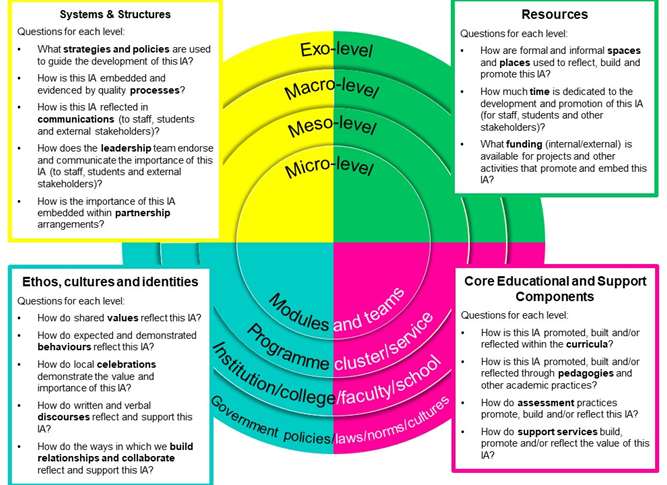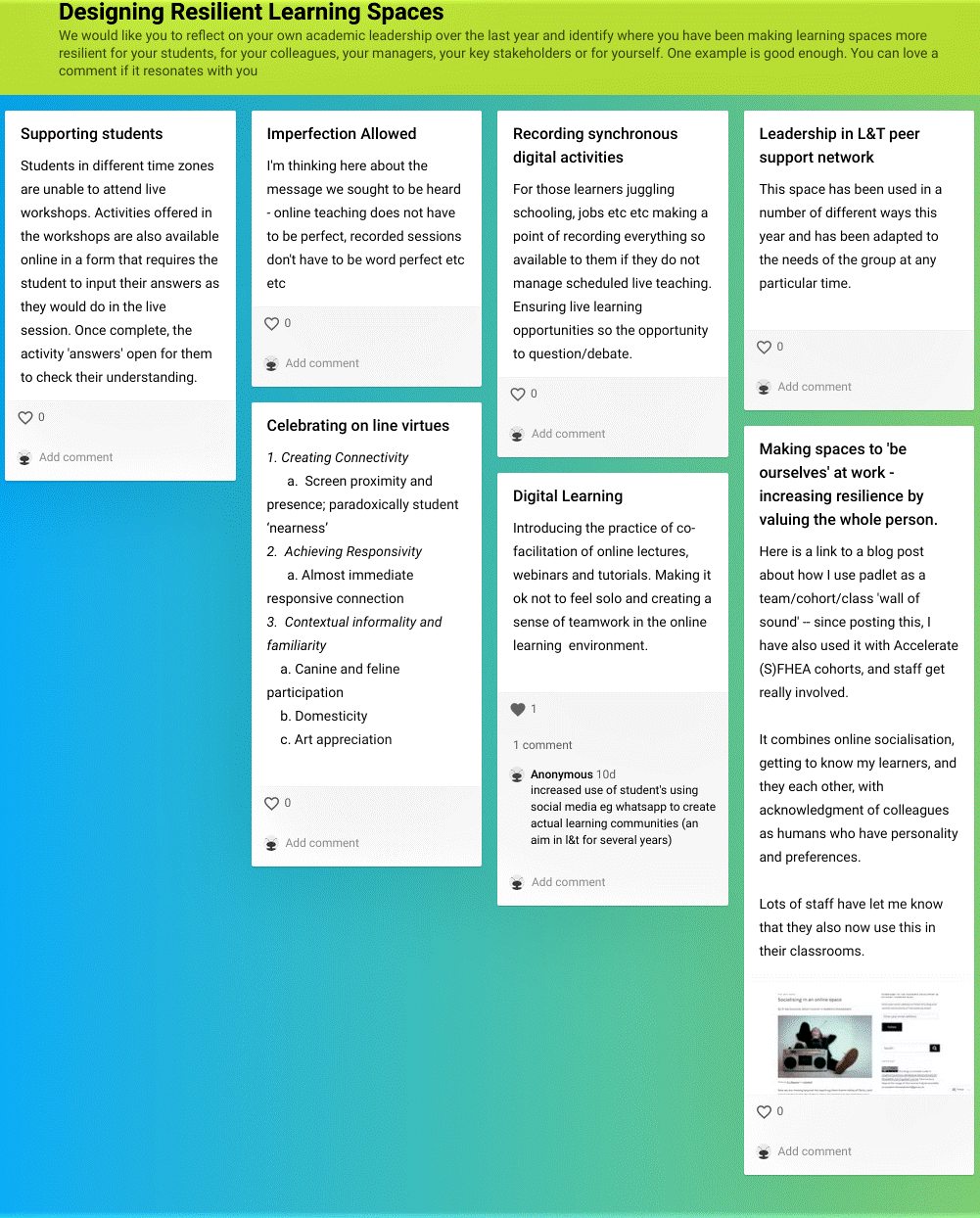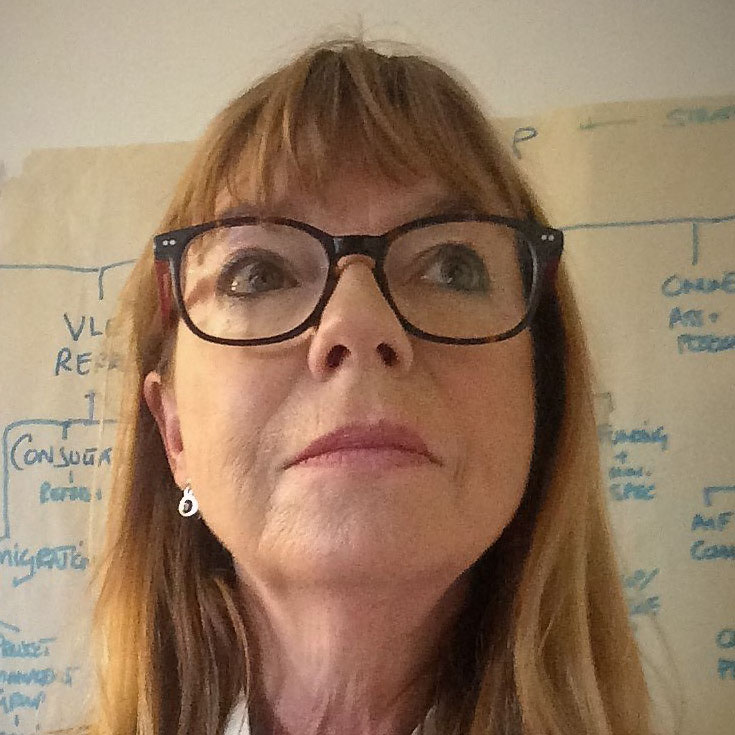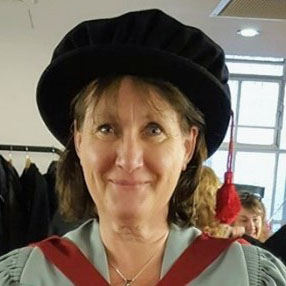28 April 2021
Blog four: Resilient Academic Leadership Insight - Paradoxes and Professional Generosity

Authors
Dr Alison Nimmo
Head of Academic Development, Glasgow Caledonian University
Dr Fiona Smart
Head of Learning and Teaching, Edinburgh Napier University
We continue to trouble the slippery thing that is resilient academic leadership. We are searching for it, worrying it, and seeking to make sense of it as a group of Principal Fellows in the Scottish Context, using the Evidencing Value Framework (EVF) to guide our endeavours.
We brought our third online gathering in March 2021 to a close using the affordance of a Padlet, referring to it in our last Insight 2: blog. The Padlet tool had enabled our early ideas of resilience to be surfaced – including bouncing back, bouncing forwards. It also allowed others to enter the mix - including noise and balance. The extract below illustrates resilience connected with tightrope walking and safety nets, and noises which disturb and soothe all entered into the troubling space.
In our fourth gathering on 15 April 2021, we brought into play postings from another Padlet into which we had each contributed in advance. It focused on Designing Resilient Learning Spaces. It had invited us to reflect on our own academic leadership over the last year and to identify where we had made learning spaces more resilient for our students, colleagues, managers, key stakeholders, or for ourselves. We were also asked to share one good example thinking in advance about where the example might locate in the third ‘Resources’ quadrant of the EVF.

So where did we get to as a result of our ponderings at our 4th gathering? We started by revisiting the idea of music and its place as a resource which might support, maybe build, resilience. But more than this, we contemplated how music might enable insight into people as people – finding them where they are - and how it can facilitate the changing of emotional states. We wondered what the soundtrack for academic resilience could be, but parked, for now, the temptation to create one. Perhaps another day.
From there we moved to talk about the paradox of distance and proximity emerging from the Resilient Learning Spaces Padlet, whereby as we engage in online spaces we are at once reminded of how far away we are from each other - but oh so near - to the point where we realised we were only really six inches apart in our gathering that day, if we measured the distance between faces on the screen. Being able to read the online space and ‘see’ faltering resilience in our students or colleagues – ‘you can be alongside someone in a heartbeat’ – spoke to the affordance of online platforms which have become all too familiar to us.

Our reflections took us into a conversation wherein we contemplated how the world of work had come into the space of the domestic, within which it has been possible to gain access into other people’s homes and private domains in ways which are at once both comforting and intrusive. In saying this, we are reminded of a current TV advert in which an individual won’t allow her camera to show her dilapidated kitchen. Her embarrassment is all too obvious. And we also smile at the memory – our own, or shared - of the cat’s bottom and its (un)timely swish across the screen just as a matter of import was tabled thus challenging the gravitas of the situation. Proximity, as an asset of online learning and working, having the potential to both enhance and reduce the sense of ‘remoteness’ and hence of resilience. Is the value of proximity in the eye of the beholder perhaps?
We moved the conversation into the necessity for flex, and the ability of a resilient leader to ‘morph’ planned meetings/projects into what they need to be, rather than staying fixed to the agenda previously determined.
Reflecting back, it was evident in our fourth online gathering that our understanding of resources as suggested in the EVF was focused more on humans as resources – we appreciate this sounds clumsy - as opposed to things. We are not saying here that things – the stuff of HE – don’t matter, but rather that it is people who create and nourish resilience and resilient academic leadership.
This path led us into discussion about academic or professional generosity and the willingness to share – resources, knowledge, skills - and to knowingly give without expectation of gaining something in return, although not uncommonly this was the outcome. The act of giving was not spoken of in terms of bequeathing resilience, but of nurturing and supporting it in others. There were nodding heads when it was questioned whether we would have done this earlier in our academic careers and whether professional recognition, as PF in our context, provided a core of inner resilience to allow leadership to be demonstrated by giving away, and putting others first.
Once again, we as a collective did not find the definitive answer to the question - What is resilient academic leadership? - but we added in yet more metaphors and proxies. Furthermore, just as happened at our 11 March gathering when we focused on the Core Educational and Support Quadrant, we found ourselves valuing our varied places of academic leadership spread across the four layers of the EVF.
It seems that PFs, as resilient academic leaders, are capable of flex within the spaces which form the university, a quality which may be enabled again because of the confidence which comes from professional recognition and which in turn permits action in a range of ways. Returning to the quote used in the last blog (see below), we are members of a community who can and do exhibit resilience in adversity. We are not alone in this, but can be part of the protective armour afforded to the university, part of that which establishes its strength and capacity for bounce back, bounce forwards.
This article explores the idea of community as it relates to the concept of resilience. It focuses on community both as context (local environments providing a set of risk and protective factors that have an influence on the well-being of community members) and as collective actors that can exhibit resilience in themselves by organizing and acting in response to adversity.(Chaskin, 2008, p65)
Reference
Chaskin, RJ (2008) Resilience, Community, and Resilient Communities: Conditioning Contexts and Collective Action, Child Care in Practice, 14:1, pp65-74


